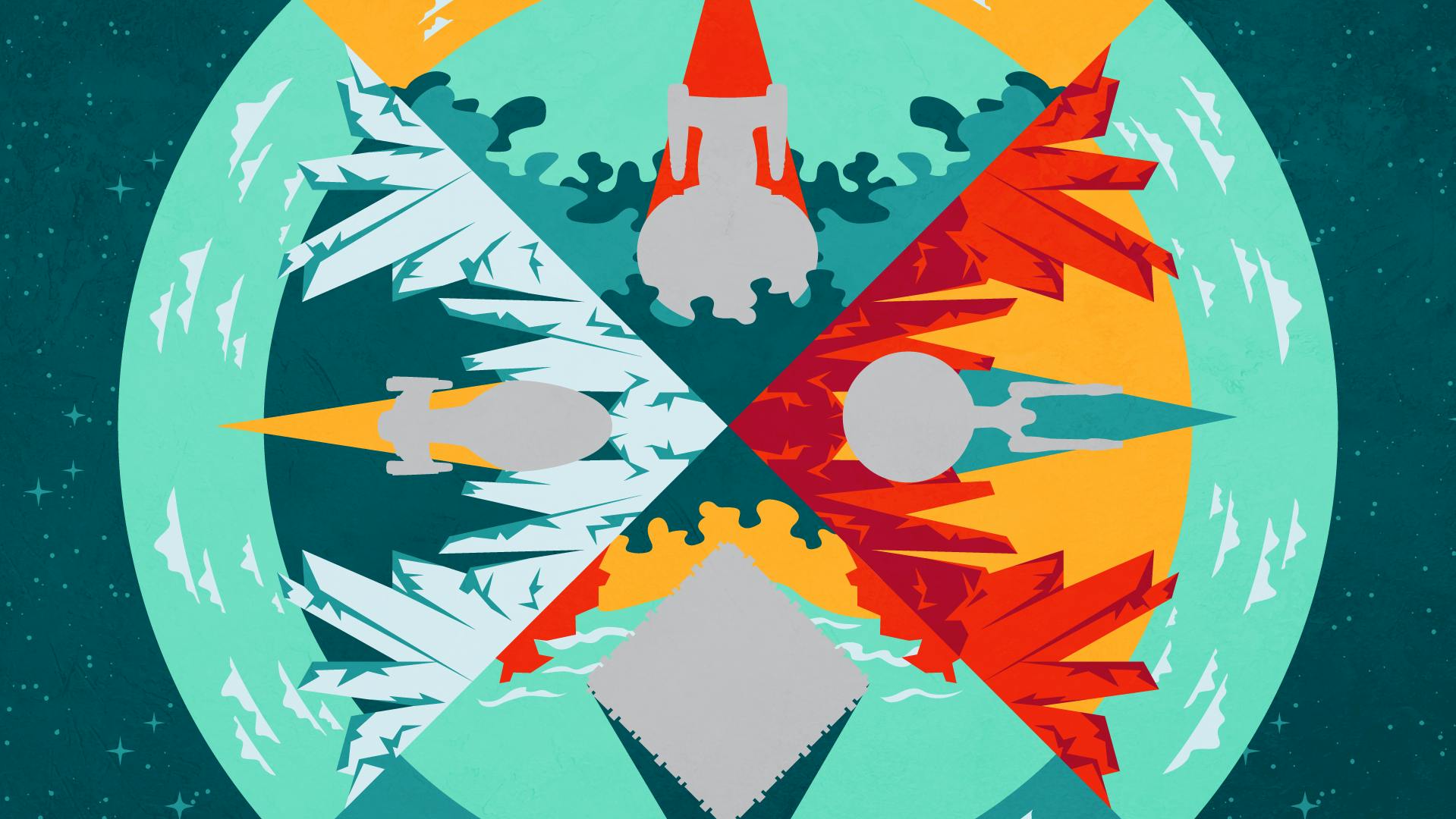
StarTrek.com
Retirement isn't often an option for ships on Star Trek. Yes, the Enterprise NX-01 and Kirk's own 1701-A are both ostensibly in a museum somewhere, but that's the exception rather than the rule. Most starships go out in blazes of glory, whether through a dramatic self-destruct sequence, a hail of photon torpedoes or — in the rarest of occasions — a crash landing on whatever rock happens to be handy and preferably M-Class.
But what makes for a good crash landing? The golden rule with landings is, of course, "Any landing you can walk away from is a good one." But this is also entertainment for us Terrans at home, so style has to matter as well — sure, we want our brave crew to survive the impact, but we want it to look cool, too.
Star Trek's Most Colossal Crash Landings
So let's do this; let's rate some of the best planet-side crashes in Star Trek history. Here are some ground rules:
- No Shuttle Crashes:
If we had to include shuttle crashes on this list, we'd be at this for days, and that's just (replicator rations on Voyager are used for two things — black coffee and Class 2 shuttlecrafts). And runabouts count as shuttles here, otherwise the DS9 crew would have way too much to answer for. - The Ship Has To Make Landfall:
Mid-space collisions don't count, just like the time I nudged someone in the parking lot of a movie theatre while borrowing my mom's '89 Bonneville. Ship-to-ground crashes only. - We Have To See At Least Some Of It:
Star Trek episodes often start off with a ship already crashed, or let the moment of impact conveniently coincide with a commercial break. Our judges, drawn from a large pool of distinguished Milky Way races, need to have something they can grade.
All right, with that settled, all hands had better hope they’re on one of the rare Starfleet vessels that gets issued seat belts,
The U.S.S. Voyager Goes Down, ""
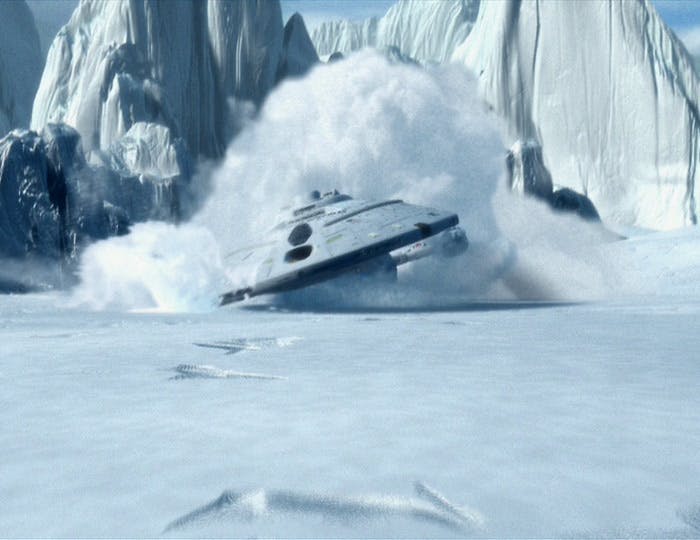
"Timeless"
StarTrek.com
Have you ever screwed up so bad at your job that the only way to fix it is by violating the Temporal Prime Directive?
Harry Kim, the U.S.S. Voyager's forever ensign, had a day like that — guiding the Voyager through a quantum slipstream from the safety of the Delta Flyer. Harry's math error sent Voyager hurtling towards a frozen planet. Harry and Chakotay could only watch in horror from their front-row seats as their ship, home, and crewmates smacked against the ice like a dragonfly meeting a windshield.
Style Points: The Voyager's splashdown onto a vast glacial field is one of the visual high-points of the entire series, a jaw-dropping sight even when deep down you know Harry is going to find a way to undo it all. The ship comes down hard, skidding across the frozen landscape.
Did They Walk Away: Oh, my, no. Decks 9-14 crunched themselves into Deck 10 on impact, along with whoever might have been working there. The rest of the crew also died in the crash, with the inertial dampeners unable to dampen anywhere near that much inertia. Only The Doctor, made out of sturdy photons instead of squishy meat, was salvageable from the crash, and aided Harry and Chakotay.
Overall Score: 8 out of 10, bolstered slightly by the Klingon judges who tend to give high scores to landings where everybody dies gloriously.
The Enterprise Gets Taken Apart,
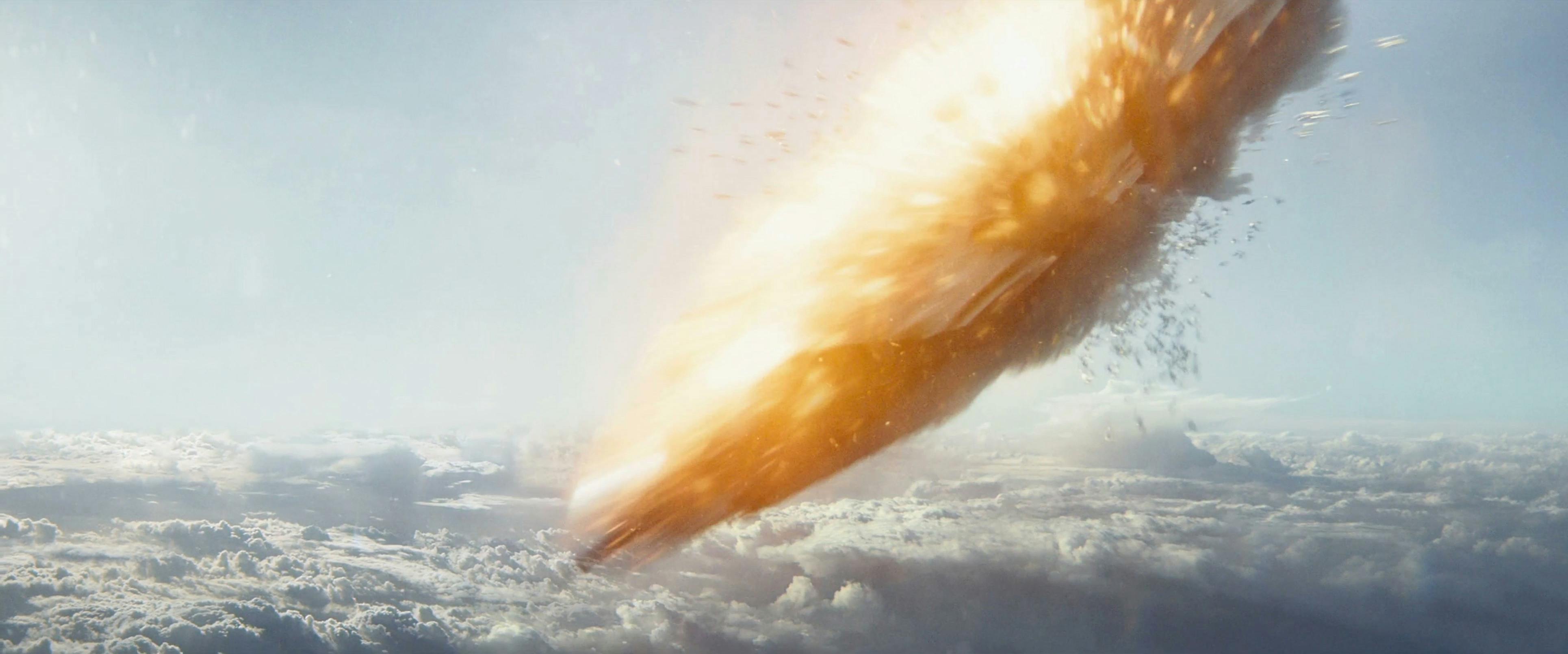
Star Trek Beyond
StarTrek.com
At the beginning of Chris Pine's third outing as James T. Kirk, our intrepid captain feels as though life has gotten a little "episodic." Luckily for him, nothing jostles you out of your rut quite like a swarm of highly-advanced drone ships dismantling your entire ship and kidnapping your crew. The small, pointy crafts sever the ship's nacelles so there's no escape, and eventually separate the saucer from the secondary hull as well. The saucer ends up largely intact on the planet below, which allows Kirk to sneak back aboard later for one last use of the ship's resources, and one last goodbye to a fine ship.
Not to worry, Jim. As another Enterprise captain says years later, and one parallel universe over, there are plenty of letters left in the alphabet.
Style Points: The Enterprise dies a slow, torturous death, taking up a decent chunk of the film's first act, which really lets you feel what's being taken away. For a decent chunk of the beginning, you're convinced that Scotty will still find a way to salvage Starfleet's pride and joy, and the whole sequence is white-knuckle spectacular.
Did They Walk Away: In the universe of Star Trek Beyond, Kirk's father George was forced to go down with the ship when the U.S.S. Kelvin exploded. Starfleet learned a lesson from that, and outfitted Jim's Enterprise with "Kelvin Pods," tiny rocket ships adjacent to the bridge that allow the command crew to bail out at the last minute along with rations, equipment, and a spiffy costume change. Also, the Beyond version of the ship was assembled in Earth gravity rather than in Spacedock, possibly allowing the ship to handle more robust crashes than its Prime Universe counterpart.
Overall Score: 7 out of 10; the Vulcan judges ruled that since nobody was left aboard the Enterprise when it crashed, nobody could claim credit for the landing.
The Saucer Section Mows The Forest,
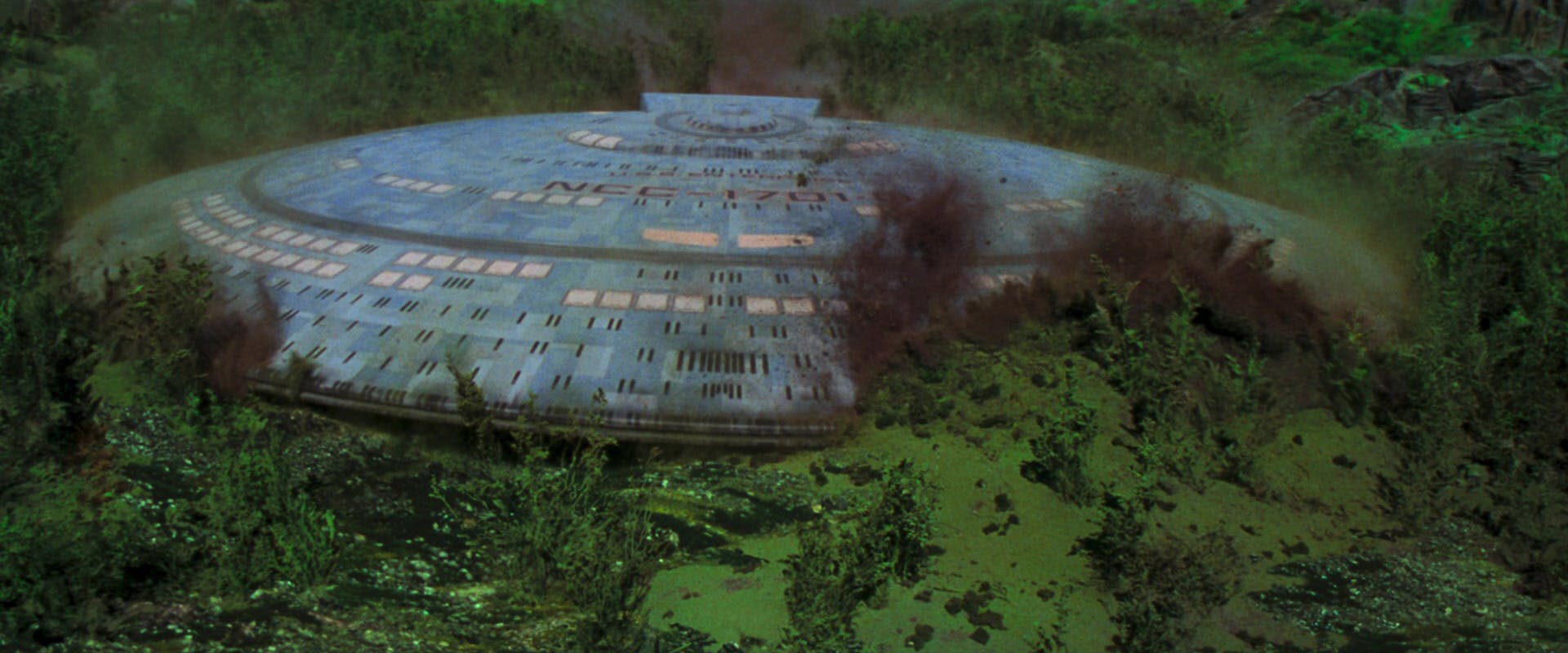
Star Trek Generations
StarTrek.com
, in classic Duras fashion, took down the Enterprise-D using Romulan-style treachery rather than the glorious straight-up fight that Klingon custom demands. Piggybacking onto Geordi's VISOR allowed them to discern the Enterprise's shield frequency, so that their torpedoes passed effortlessly through to the ship's vulnerable bits. Triggering a warp core breach, the Enterprise had no choice but to move the crew over to the saucer section, detach, and crash on a nearby planet.
Although Captain Picard had access to the temporal Nexus that could have sent him to anywhere in time or space, he didn't pull a Harry Kim. He only undid the destruction of the system's sun, leaving the Enterprise where it landed — at the end of a several-mile-long, deforested trench.
Style Points: This scene has style to spare. Watching the saucer section break through the atmosphere before skidding like a frisbee across the planet's surface, while the beloved bridge of the Enterprise where we spent 7 years of adventures flies apart? We might be sad to see her go, but at least the movie gave the old girl a spectacular send-off.
Did They Walk Away: Yes, and we owe it all to the helmsman at the time — Counselor Deanna Troi. Some have, in the past, criticized our ship's counselor for crashing the ship in her only turn at the helm, but the ship was going down no matter who was sitting in that chair, and Troi brough the ship down so gently that even Data's cat survived (though admittedly, I don't think we can say the same for Picard's fish).
Overall Score: 9 out of 10; everyone survived and Troi brought the ship in for a pretty decent landing, given her inexperience — don't let anybody forget it.
Seven of Nine Drops A Cube, ""
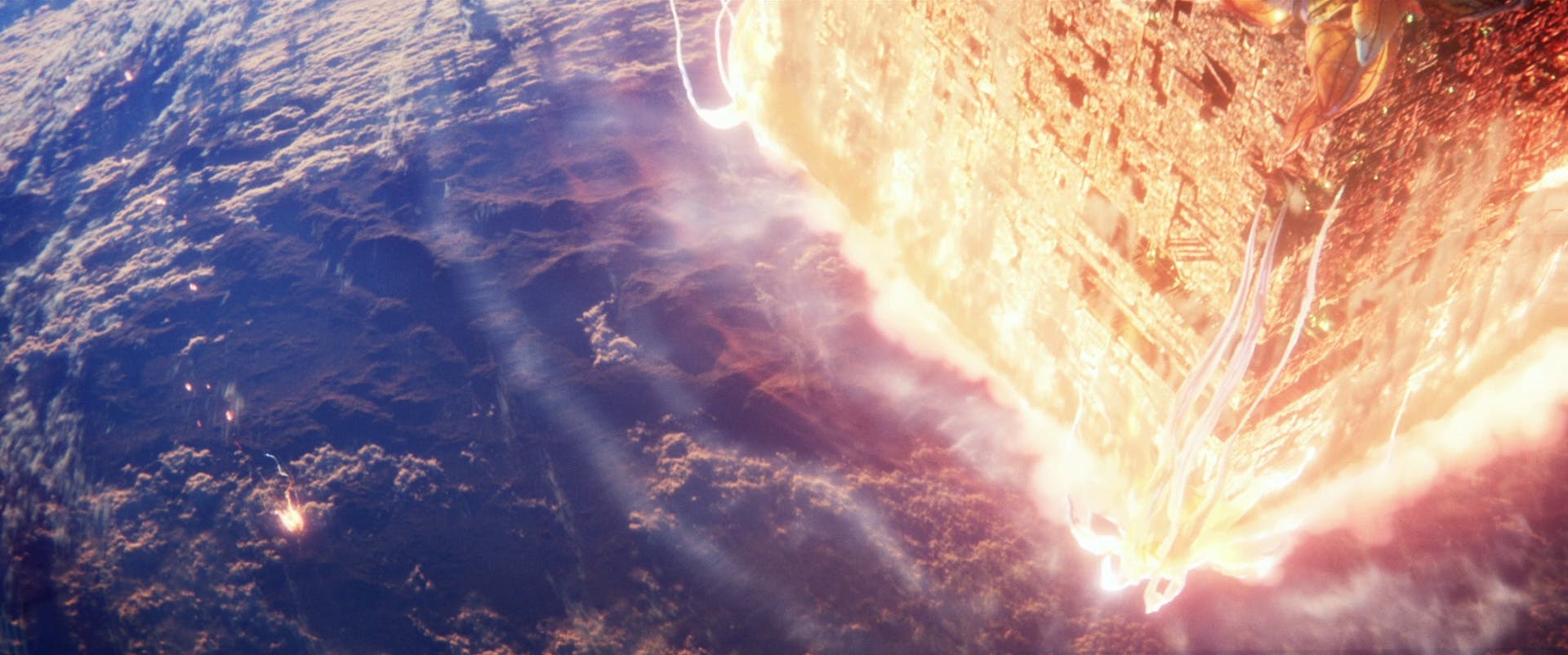
"Et in Arcadia Ego, Part 1"
StarTrek.com
Arriving finally at their destination after a whole season of searching, Jean-Luc Picard, Soji, and the rest of the crew of La Sirena were met with multiple crazy sights upon their arrival at Ghulion IV — a planet full of androids, orbital orchids the size of shuttlecraft, and a Borg Cube being piloted by Seven of Nine.
Shortly thereafter, they discovered what the giant orchids were for, as the spacefaring flowers enveloped La Sirena, shut down all power, and escorted it to a relatively-dainty crash on the planet's surface. The same couldn't be said of the Borg Cube, which wasn't really shaped the right way to enter an atmosphere because, you know, cube.
Style Points: The Cube hitting the atmosphere is a pretty fantastic effect — it's always nice to see Star Trek pay attention to the laws of space, and the friction generated by a giant cube in those circumstances would be spectacular. We don't actually get to see the Cube hit the ground, however, so most of this crash will have to happen in our imaginations.
Did They Walk Away: Seven, Elnor, and the XBs still aboard the ship came away from the crash just fine, which hopefully means more adventures in Picard Season 2.
Overall Score: 6 out of 10; the Romulan judges consider the crash to be destruction of Romulan property.
The U.S.S. Discovery Hits the 31st Century with a Bang, ""
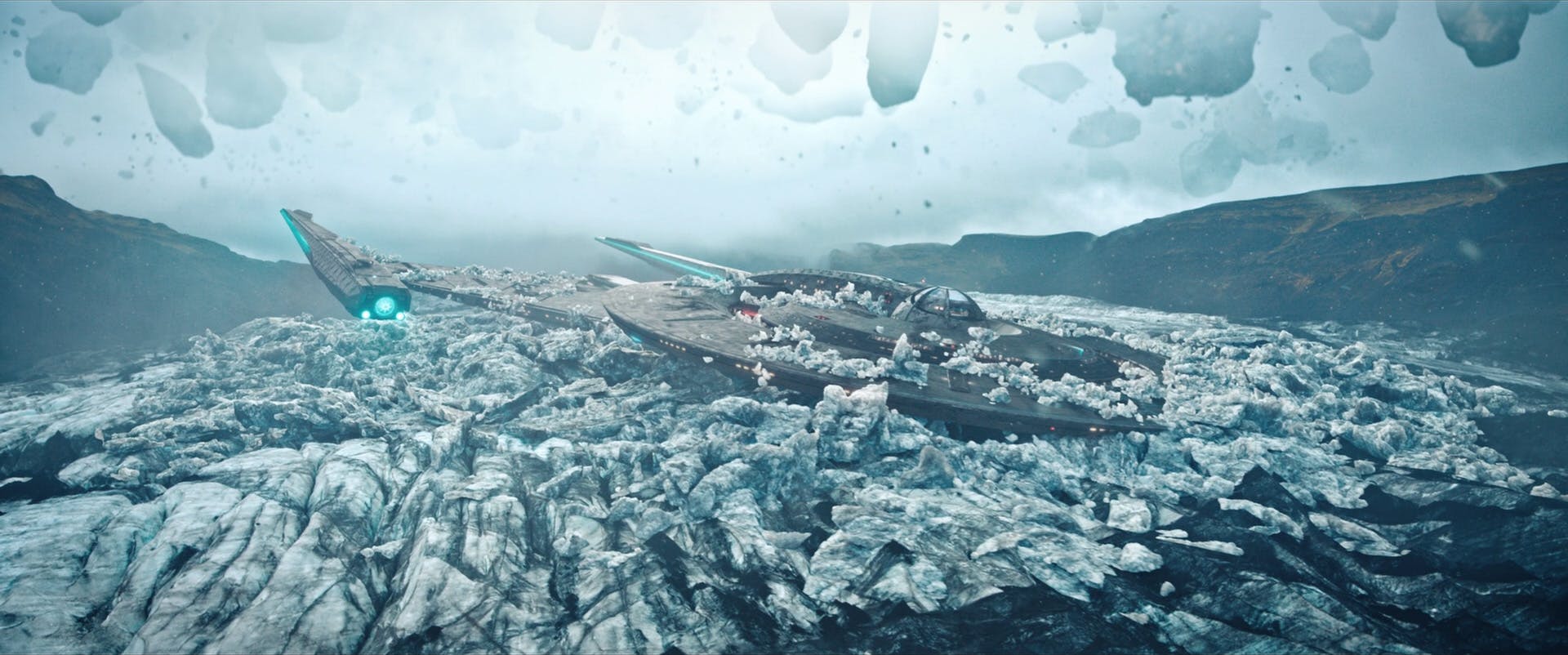
"Far From Home"
StarTrek.com
Not a lot was certain when the U.S.S. Discovery traveled to the far future to save all sentient life in the galaxy. Would their mission succeed? Would Starfleet still exist? Would everybody's favorite tree in San Francisco still be there?
Shortly after arriving, the crew found out that the future still had one thing — spectacular crash landings. Unable to stop the ship, the Discovery underwent a series of aerial maneuvers before crashing down in what turned out to be parasitic ice that would devour the ship after nightfall.
Style Points: Oh, Keyla Detmer, how I love you. This is, without a doubt, the most stylish crash landing in Star Trek history. They use every tool at their disposal to avoid debris and soften their landing in a thrilling sequence that really showcases how skilled the crew of the Discovery is, no matter the century.
Did They Walk Away: Oh, there was no need; the ship could still fly after Detmer's landing. She suffered a crisis of confidence in her own flying ability as the season progressed, traumatized by the ship going down, but there was no need. She is a phenomenal pilot. Tom Paris probably grew up with posters of her on his bedroom wall.
Overall Score: 10 out of 10. It looked cool, everybody lived, and the ship still worked. If you're going to park a ship on a planet, you can't hope for anything better.
In our informal Olympics, the Discovery is taking the Gold here, with Counselor Troi bringing home the Silver for the Galaxy-class team, and Harry Kim accepting a bronze on behalf of the entire crew that he got killed. One thing is certain, though — Federation starships need ejector seats.





